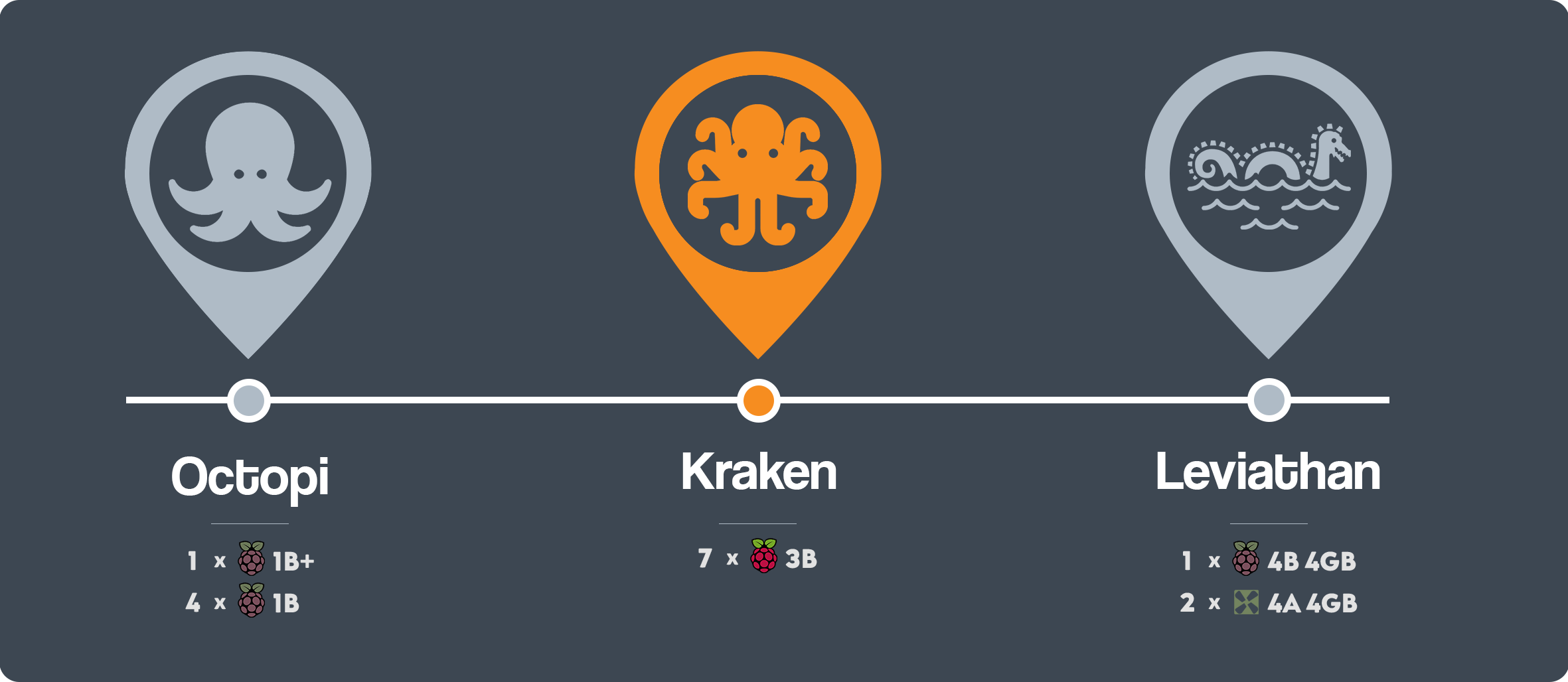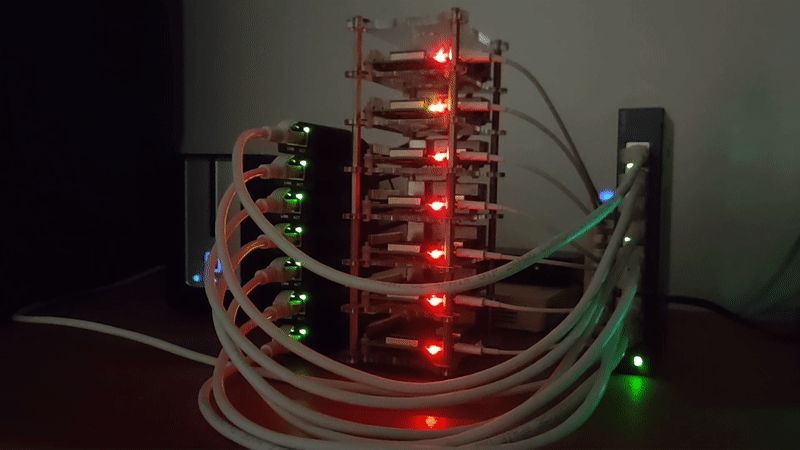
Octo_pains_
In October 2018, more than a year after building my first cluster Octopi, I had officially outgrown the cluster. I started noticing the performance bottlenecks started when I tried to run Wordpress on it, where a single page load of a newly installed Wordpress blog takes about 10 seconds! Nevertheless, all that was unsurprising given the measly single-core 700MHz processor on each node.
At that point in time, I’ve graduated from university then and secured a job as a Data Scientist + Full-Stack Engineer at a startup and I thought to myself:
What better a time to build myself a new cluster?
Kraken
The second cluster was named Kraken.
The kraken (/ˈkrɑːkən/)[1] is a legendary cephalopod-like sea monster of gigantic size in Scandinavian folklore. (Wikipedia)
The Kraken is basically a much bigger and monstrous octopus, hence the name, symbolizing an evolution of the first cluster. It was built out of 7 Raspberry Pi 3Bs powered by a single USB charger.
With my first pay check, I had initially intended to finally build a cluster of 8 nodes but once again I was unable to realize this cursed idea. The maximum number of ports on a consumer-grade network switch was 8, enough for 7 nodes and a cable to the router.
| Item | TP-Link 8-port Switch | TP-Link 16-Port Smart Switch |
|-------------|-----------------------|------------------------------|
| Cost (SGD)* | S$26.46 | S$195.03 |
| Cost (USD) | $18.99 | $139.97 |
* SGD/USD exchange rate is 0.71770 as of the time of writing
An alternative was to use commercial-grade network switches with 16 ports but that was obviously was out of the question (and budget).
#raspberry-pi #docker #docker-swarm #cluster-build #hardware #hackernoon-top-story #diy #kubernetes
